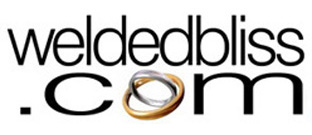Antique & Vintage Charms
We regularly have Nuvo, Chim, other vintage charms, estate jewellery and silverware for sale.
Please note our vintage stock of charms are gradually being moved to our ebay channel at Our Ebay Shop
Vintage Charm Information
Nuvo was one of the brand names of the jewellery manufacturer R. Platnauer from Birmingham UK.
The company of R. Platnauer was incorportated in the second decade of the twentieth century from a family business, Platnauer Brothers, which can be traced back around a century earlier and active as a watch case maker amongst other items.
R. Platnauer became a major volume manufacturer of jewellery from their purpose built factory called Nuvo House but by the 1990's nearly all high volume jewellery manufacture had shifted to the far east where manufacturing costs were much lower, and R. Platnauer began to concentrate more on imported goods and corporate giftwear.
Nuvo was incorporated as a limited company in 1961 under the directorship of John Platnauer (b.1924) and effectively ceased production at the beginning of the 1980s when the price of silver bullion hit the roof, mainly due to the attempted cornering of the market by Nelson Bunker Hunt. Nuvo was formally dissolved in the 1990's.
Nuvo charms can be distinguished by the Nuvo or Nuvo regd logo which is usually on the base but could also be on any other convenient part of the charm. Hallmarked charms by Nuvo will have the sponsor’s mark RP with the Birmingham Assay (where the mark is registered) anchor mark, but a hallmark will normally only be present on the heaviest of silver charms (legal threshold of 7.78 grams) and most gold charms (legal threshold of 1 gram).
A British hallmark can only be applied by one of the current four assay offices or their sub offices and must contain the stamp of the assay (for Birmingham it is the anchor), the sponsor or owner's mark, along with the metal purity e.g. 925 for sterling silver. The 925, sterling or silver mark on its own is not a hallmark but an indicative mark which is applied by the manufacturer.
Chim was the brand mark of another well known London based maker who ceased trading early in the 1980's. These charms can be distinguished by the name CHIM in capitals impressed on the charm.
Welded Bliss took over the production of another quality Birmingham manufacturer in 1989 when they ceased trading. Many of our charms are also original 60s and 70s designs, have been in continuous production, and are at least equal in quality to Nuvo or Chim designs. Charm manufacturers from the 1960s onwards often had very similar designs and it is interesting to compare some of the designs from Nuvo Chim or Toby for example to those of our own as it can be seen there are often only subtle differences between them. This is not surprising as many of the freelance model makers of the time worked for quite a few different manufacturers and would alter their designs accordingly for each one.
Condition report categories:
Mint: As new, either in original packaging or in unworn condition.
Excellent: Only the lightest use.
Very Good /Good: In good all round condition, obviously used with light surface marks but no impact on detail.
Fair: Heavier wear with more rubbing to exposed areas.
Poor: Very heavy wear and rubbing which impacts on detail.
The style of charms may be categorised as follows:
Stamping Hollow: Sometimes referred to as 'puffed'. A hollow charm is made by soldering together two stamped or pressed components. They can usually be identified by a seam running around the centre, a pin hole (which allows air to escape when manufacturing), and a lighter weight compared to a similar solid object.
Although most of these charms today are either Italian or from the Far East, there is some good quality British made charms from the 1960's.
Stamping One Part: A lightweight one piece stamping, not three dimensional.
Solid Cast:Basically this means it is not a hollow stamping. The item may be completely solid and it may also have scooped areas or voids depending on the design, but these are visually apparent. For example a bell has a void by design, but it could still be described as a solid item.
Opening Hinged: Made from a minimum of two parts with a hinge. Usually the catch will be at the opposite side to the hinge.
Opening: As above but with no hinge, for example, a box with a lid. This is not a common design for a charm.
Moving Parts: Made from a minimum of two parts where there is free movement between the parts. The parts may be riveted together or joined with links.
Articulated: Although two parts riveted together could be called articulated, I prefer to classify this as a series of segments or pieces which are jointed. A classic example of this is a fish design where several segments of the body are riveted allowing the pieces to move in two directions which creates fairly realistic movement.
Mechanical: This is a type of moving charm where there is a functioning part (or parts) in the design. The most common example of this would be a lever or a winding handle.
Automaton: Movement created by springs and cogs, for example, clocks and animated figures. Extremely rare in charm form.
Enamel: Usually enamel based paints but more rarely, vitreous enamel which is a glass like, fired or kiln baked finish. Modern 'enamel' finishes are usually resin based cured products a.k.a. 'cold enamel'.
Hand Made: Entirely made from components from hand cut, raised or chased pieces of sheet and wire and assembled by soldering or mechanical fixings.

 Deutsch
Deutsch Dansk
Dansk English (US)
English (US) Español
Español Française
Française עברית (ישראל)
עברית (ישראל) Dutch
Dutch Türkçe
Türkçe

